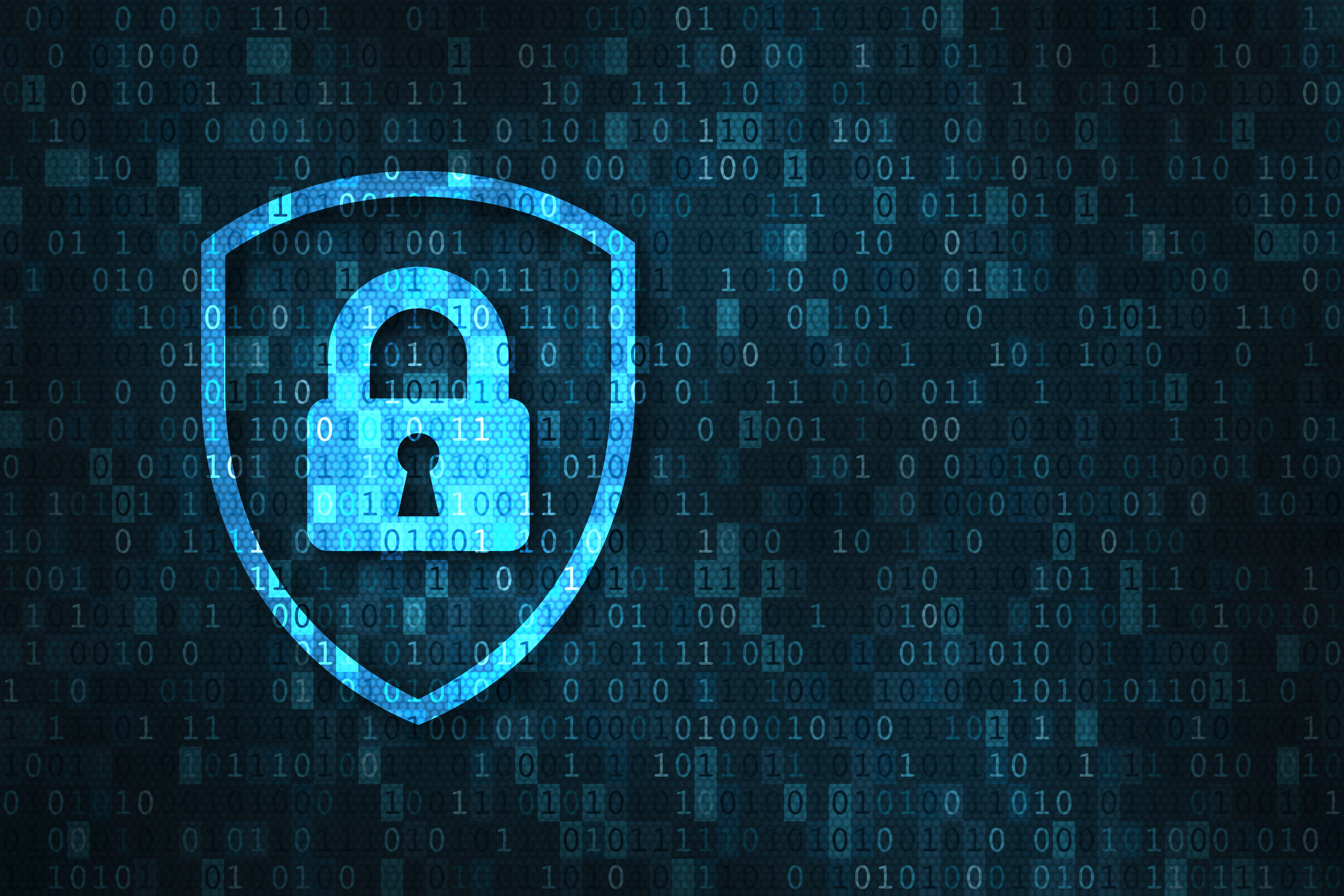
How to Safeguard Your Website: A Comprehensive Approach to Business Safety
In today’s digital landscape, safeguarding your website is crucial for maintaining business safety and ensuring customer trust. With the increasing frequency of cyber threats, small business owners and IT professionals must prioritize robust website security to protect sensitive data and maintain operational integrity. Implementing effective cybersecurity steps is essential to prevent unauthorized access and potential breaches that could jeopardize your online presence. By focusing on comprehensive online protection strategies, businesses can mitigate risks and enhance their digital defenses. This guide will delve into key practices for fortifying your website against potential threats, providing a solid foundation for enduring security.

Importance of Online Protection
Online protection is vital for safeguarding your website and business interests. It helps maintain customer trust and protects sensitive data from unauthorized access.
Effective online protection measures can prevent financial losses, reputational damage, and legal consequences that may arise from security breaches. By implementing robust security protocols, businesses can create a safe online environment for their customers and stakeholders.
Prioritizing online protection also demonstrates a commitment to data privacy and compliance with industry regulations, which can be a competitive advantage in today’s digital marketplace.
Common Cyber Threats
Cyber threats come in various forms, each posing unique risks to website security. Understanding these threats is crucial for developing effective defense strategies.
Some common cyber threats include:
-
Malware infections
-
Phishing attacks
-
Distributed Denial of Service (DDoS) attacks
-
SQL injection
-
Cross-site scripting (XSS)
These threats can compromise website functionality, steal sensitive data, or disrupt business operations. Staying informed about emerging threats and their potential impact is essential for maintaining a strong security posture.
Impact on Business Safety
Security breaches can have far-reaching consequences on business safety, affecting various aspects of operations and reputation.
Financial losses are often the most immediate impact, including costs associated with breach mitigation, system recovery, and potential legal fees. Long-term effects may include decreased customer trust and loyalty, leading to reduced sales and market share.
Regulatory non-compliance resulting from security breaches can lead to hefty fines and increased scrutiny from governing bodies. This can strain resources and damage the company’s standing within the industry.
Implementing Cybersecurity Steps

Effective cybersecurity requires a systematic approach. This section outlines key steps for assessing security needs, setting up strong defenses, and maintaining ongoing protection.
Assessing Security Needs
A thorough security assessment is the foundation of a robust cybersecurity strategy. It helps identify vulnerabilities and prioritize security measures based on specific business needs.
Start by conducting a comprehensive inventory of your digital assets, including hardware, software, and data. This inventory will help you understand what needs protection and where potential vulnerabilities may exist.
Next, perform a risk assessment to evaluate potential threats and their impact on your business. This process involves identifying critical assets, potential attack vectors, and the likelihood of various security incidents.
Finally, review your current security measures and compare them against industry best practices and relevant compliance requirements. This gap analysis will help you identify areas that need improvement and guide your security investment decisions.
Setting Up Strong Defenses
Implementing strong defenses is crucial for protecting your website against cyber threats. This process involves multiple layers of security measures working together to create a comprehensive protection system.
-
Install and configure a robust firewall to monitor and control incoming and outgoing network traffic.
-
Implement secure authentication methods, including strong password policies and multi-factor authentication.
-
Use encryption for sensitive data both in transit and at rest to prevent unauthorized access.
Regularly update and patch all software, including content management systems, plugins, and themes. This practice helps address known vulnerabilities and strengthens your overall security posture.
Implement access controls to ensure that users only have the necessary permissions to perform their tasks. This principle of least privilege helps minimize the potential impact of compromised accounts.
Regular Monitoring and Updates
Continuous monitoring and timely updates are essential for maintaining effective website security. These practices help detect and respond to potential threats quickly.
Implement a security information and event management (SIEM) system to collect and analyze log data from various sources across your network. This centralized approach enables faster threat detection and response.
Conduct regular vulnerability scans and penetration tests to identify potential weaknesses in your security infrastructure. Address any discovered vulnerabilities promptly to minimize the risk of exploitation.
Stay informed about the latest security patches and updates for all software components used in your website. Establish a systematic process for applying these updates to ensure your systems remain protected against known vulnerabilities.
Best Practices for Online Protection
Implementing best practices for online protection is crucial for maintaining a secure website. This section covers key strategies for securing user data, protecting payment information, and ensuring safe communication.
Securing User Data
Protecting user data is a fundamental responsibility for any website owner. It involves implementing measures to safeguard personal information from unauthorized access and potential breaches.
Use strong encryption algorithms to protect user data both in transit and at rest. This includes implementing HTTPS across your entire website and encrypting sensitive data stored in databases.
Implement strict access controls and user authentication mechanisms to ensure that only authorized personnel can access user data. This includes using strong password policies and multi-factor authentication where appropriate.
Regularly review and update your data retention policies. Only collect and store the minimum amount of user data necessary for your business operations, and securely delete data that is no longer needed.
Protecting Payment Information
Securing payment information is critical for maintaining customer trust and complying with industry regulations. It requires a combination of technical measures and best practices.
Ensure compliance with Payment Card Industry Data Security Standard (PCI DSS) requirements if you handle credit card transactions. This includes implementing security controls, conducting regular assessments, and maintaining secure systems and networks.
Use tokenization or encryption techniques to protect sensitive payment data. These methods replace actual card numbers with unique identifiers, reducing the risk of exposure in case of a breach.
Implement secure payment gateways and avoid storing sensitive payment information on your servers whenever possible. This approach transfers much of the security responsibility to specialized payment processors.
Ensuring Safe Communication
Safe communication is essential for protecting sensitive information exchanged between your website and its users. It involves implementing measures to prevent interception and tampering of data in transit.
Use SSL/TLS certificates to encrypt all communications between your website and its users. This ensures that data transmitted over the internet remains confidential and cannot be easily intercepted by malicious actors.
Implement secure email practices, including using encryption for sensitive communications and educating users about phishing threats. This helps protect against email-based attacks and data leaks.
Regularly review and update your communication protocols to address emerging threats and vulnerabilities. This includes staying informed about the latest encryption standards and best practices for secure communication.
Advanced Security Measures

Advanced security measures provide an additional layer of protection for websites facing sophisticated threats. This section explores advanced techniques for enhancing website security.
Utilizing Firewalls and Encryption
Firewalls and encryption are powerful tools for protecting websites against various cyber threats. When used effectively, they can significantly enhance your overall security posture.
A web application firewall (WAF) acts as a shield between your website and the internet, filtering out malicious traffic and protecting against common attacks like SQL injection and cross-site scripting.
Implement strong encryption protocols for data in transit and at rest. This includes using the latest TLS version for HTTPS connections and employing robust encryption algorithms for storing sensitive data.
Consider implementing a content delivery network (CDN) with built-in security features. CDNs can help mitigate DDoS attacks and provide additional layers of protection against various web-based threats.
Implementing Multi-Factor Authentication
Multi-factor authentication (MFA) adds an extra layer of security beyond traditional username and password combinations. It significantly reduces the risk of unauthorized access to user accounts.
Implement MFA for all user accounts, especially those with administrative privileges. This can include a combination of something the user knows (password), something they have (mobile device), and something they are (biometric data).
Consider using adaptive authentication techniques that adjust security requirements based on factors such as user location, device type, and behavior patterns. This approach balances security with user convenience.
Regularly review and update your MFA policies to ensure they remain effective against evolving threats. This includes staying informed about new authentication technologies and best practices.
Conducting Security Audits
Regular security audits are essential for identifying vulnerabilities and ensuring the effectiveness of your security measures. They provide valuable insights for continuous improvement of your security posture.
Conduct both internal and external security audits on a regular basis. Internal audits help assess compliance with security policies, while external audits provide an objective evaluation of your security measures.
Use a combination of automated scanning tools and manual penetration testing to identify potential vulnerabilities. This comprehensive approach helps uncover both known and novel security issues.
Document all audit findings and develop action plans to address identified vulnerabilities. Prioritize remediation efforts based on the severity of the issues and their potential impact on your business.
Long-term Business Safety Strategies

Developing long-term strategies for business safety is crucial for maintaining a strong security posture over time. This section explores key approaches to building a resilient security culture.
Building a Security Culture
Creating a security-conscious culture is fundamental to long-term business safety. It involves making security a shared responsibility across the entire organization.
Start by clearly communicating the importance of security to all employees. This includes explaining the potential consequences of security breaches and how each individual’s actions can impact the overall security posture.
Develop and enforce clear security policies and procedures. These should cover all aspects of information security, from acceptable use of company resources to incident reporting protocols.
Encourage open communication about security issues and create channels for employees to report concerns or suspicious activities without fear of reprisal. This proactive approach can help identify potential threats early.
Training Employees on Cybersecurity
Effective employee training is crucial for maintaining a strong security posture. Well-informed employees can serve as the first line of defense against many cyber threats.
Develop a comprehensive cybersecurity training program that covers both general security principles and role-specific security responsibilities. This should include topics such as password hygiene, recognizing phishing attempts, and safe browsing practices.
Use a variety of training methods to keep employees engaged, such as interactive online courses, in-person workshops, and simulated phishing exercises. Regular refresher courses help ensure that security knowledge remains current.
Consider implementing a security awareness program that provides ongoing education through methods like newsletters, posters, and brief security tips. This helps keep security top-of-mind for employees in their daily activities.
Planning for Incident Response
A well-prepared incident response plan is essential for minimizing the impact of security breaches and ensuring business continuity. It provides a structured approach to handling security incidents effectively.
Develop a detailed incident response plan that outlines roles, responsibilities, and procedures for handling various types of security incidents. This plan should cover steps for containment, eradication, recovery, and post-incident analysis.
Conduct regular drills and simulations to test your incident response plan. These exercises help identify gaps in your procedures and ensure that all team members understand their roles during a real incident.
Establish relationships with external security experts and law enforcement agencies before an incident occurs. These connections can provide valuable support and resources during a crisis.
